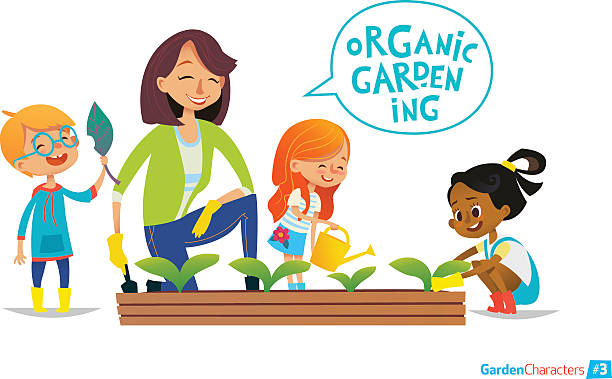
How to Cultivate a Greener Thumb
Eco-friendly gardening is all about growing plants with a focus on conserving our planet’s resources. It’s about using methods that reduce waste, support biodiversity, and leave a lighter footprint on Earth. Think of it as growing a garden that gives back to nature as much as it takes.
Why consider this approach? Well, sustainable gardening doesn’t just help the planet, it’s rewarding for you too. Growing your own fruits and veggies means fresher produce on your table, which is healthy and super tasty. Plus, there’s a satisfaction in knowing you’re doing your bit to fight climate change.
Eco-friendly gardening can significantly reduce your carbon footprint. By adopting sustainable practices, you’re helping cut down greenhouse gases. This kind of gardening encourages carbon sequestration – that’s storing carbon in helpful ways, like in your soil! It might sound like a small change, but when lots of us join in, it adds up.
This green gardening path might seem a bit daunting at first, but it’s really about making thoughtful choices – like picking the right plants and using resources wisely. Once you get started, you’ll find it gets easier. You’ll start noticing little things you can tweak here and there to make your garden eco-friendlier, and before you know it, you’ll have a thriving green space that looks great, tastes good, and makes you feel awesome about your contribution to the planet.
Laying the Foundation
Planning out your garden isn’t just about aesthetics – it’s about creating a thriving ecosystem. First off, getting to know your garden’s specifics makes a big difference. You’ll want to take stock of where the sun hits, how the wind blows, and where the rain tends to puddle or run off. These elements dictate how your garden will grow, so keep an eye out or grab a notebook and jot down your observations.
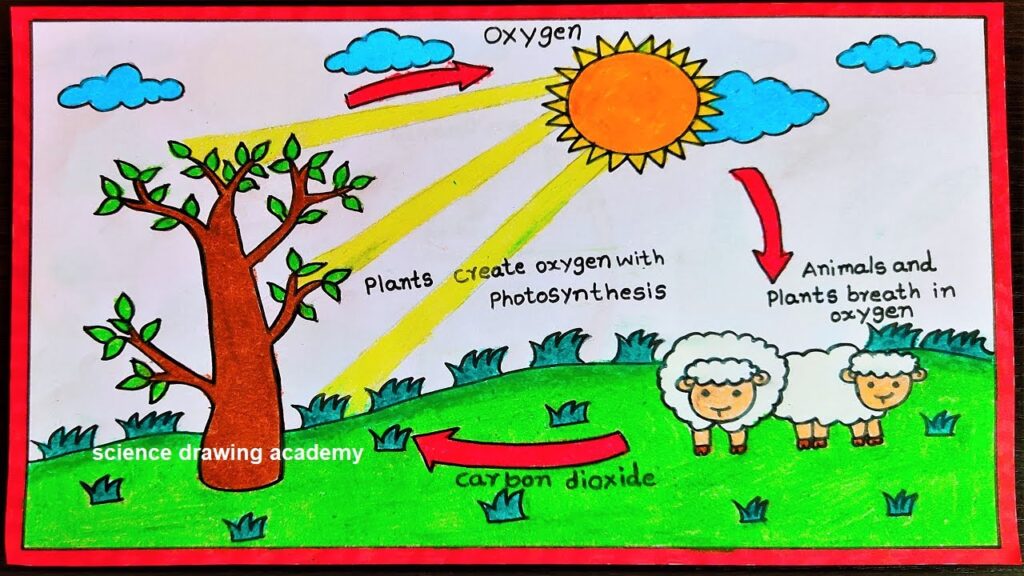
Once you’ve got that down, it’s time to consider how to boost biodiversity. Planting a mix of species doesn’t just look good; it attracts a whole host of beneficial insects and wildlife. Imagine having a garden that’s not only lush but also humming with life. Designing zones in your garden can cater to different types of plants – this could be a native plant corner, a spot for herbs, or an area dedicated to pollinators. It’s like crafting an adventure playground for nature right in your backyard.
And don’t worry if you don’t have a lot of space. There’s always room for creativity, whether it’s a small yard, a balcony, or even urban spaces. Vertical gardens or container plants can work wonders in limited areas without sacrificing style or function.
Choosing Materials
When choosing materials for your garden pathways, beds, or borders, opt for recycled or reclaimed materials whenever possible. This not only helps the planet by reducing demands for new resources but also adds a unique, often charming touch to your space. Old bricks, broken tiles, or reclaimed wood can find new life in your garden. It’s like giving a new chapter to something that might otherwise end up in a landfill.

Remember, a well-planned garden doesn’t happen overnight. It takes thought, patience, and a bit of tinkering here and there. But every effort you put in is a step towards creating a sustainable paradise that both you and our planet will appreciate.
Nurturing the Soil
The secret to a bountiful garden lies beneath your feet. Healthy soil is the foundation that will make your garden thrive. The first step is getting to know your soil’s personality, and this means checking its pH level and nutrients. A simple soil test kit from your local garden center or DIY test can give you an insight into what your garden bed might be longing for.
Once you’ve figured out what’s going on under the surface, it’s time to enrich that soil. Think of organic matter as your soil’s best friend. Compost, leaf mould, and well-rotted manure can give tired soil the boost it needs. By adding these, you’re not just feeding plants, you’re creating a nurturing environment where beneficial microbes and earthworms flourish, eventually improving texture and drainage too.
Steer clear of synthetic fertilizers. They might seem like a quick fix but often harm the lively ecosystem within your soil. Instead, whip up a batch of compost tea or use worm castings. These natural options enrich the soil without any harsh chemicals, supporting long-term health and growth.
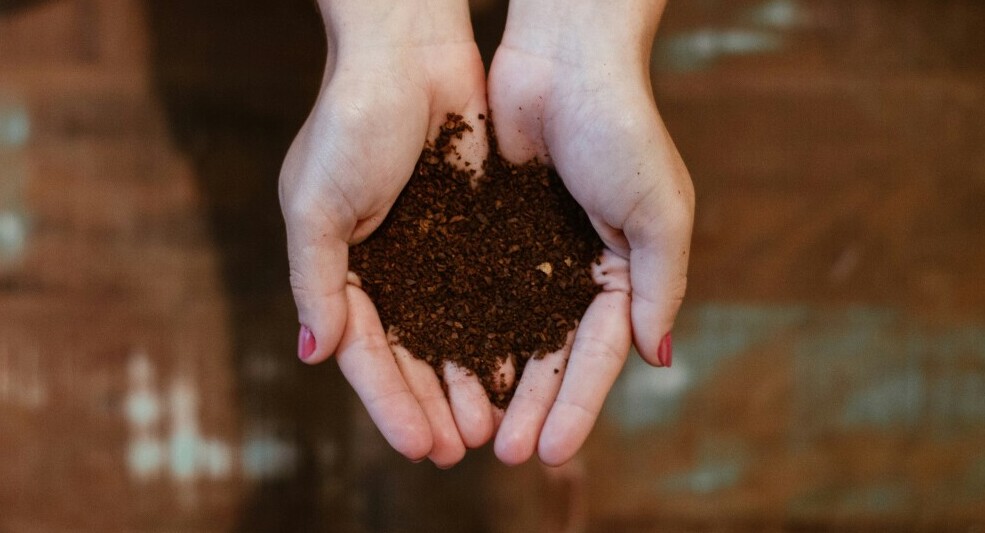
Mulching is a savvy move, acting like a cozy blanket for your plants. It helps conserve moisture, keeps weeds at bay, and slowly breaks down to add even more goodness to the soil. Plus, it keeps your garden looking neat and tidy.
Investing time into building healthy soil is investing in the future of your garden. It’s an ongoing relationship, but a rewarding one, paving the path to vibrant plants and a thriving garden ecosystem.
Watering Wisely
Keeping your garden hydrated is crucial, but it doesn’t mean drenching it daily. Timing is everything here. Watering early in the morning is ideal because it minimizes evaporation and ensures your plants soak up what they need before the sun gets too intense.
Drip irrigation and soaker hoses are great tools to make watering efficient. They deliver water directly to the roots, where it’s needed most, without wasting it on leaves or paths. Setting up these systems might take a little time upfront, but they can save you so much effort and water in the long run.
Don’t overlook the potential of collecting rainwater. Installing rain barrels or cisterns lets you capture nature’s own supply, which can then be used to water your garden. It’s like having your own backup water source that’s good for the environment and gentle on your water bills.
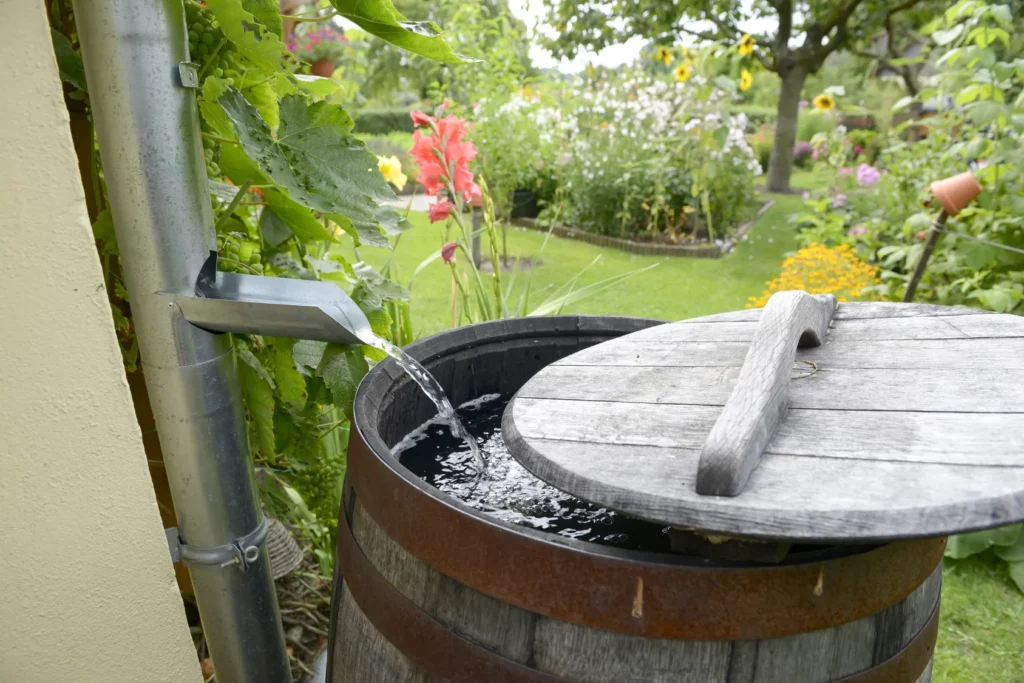
Choosing drought-tolerant and native plants for your garden can massively cut down on your water needs. These plants have adapted to thrive with minimal water, making them perfect for those times when nature doesn’t provide enough rain.
Every drop counts, but using water smartly means your garden stays lush and amazing without draining this precious resource.
Selecting the Right Flora
Choosing the right plants is a key step in creating an eco-friendly garden. Native plants are a fantastic option because they’re adapted to the local climate and soil, making them easier to grow and maintain. Plus, they support local wildlife by providing food and shelter.
Companion planting is another smart strategy. By pairing plants that benefit each other, you can naturally deter pests and improve growth. For example, marigolds are known to keep pests away when planted with crops like tomatoes.
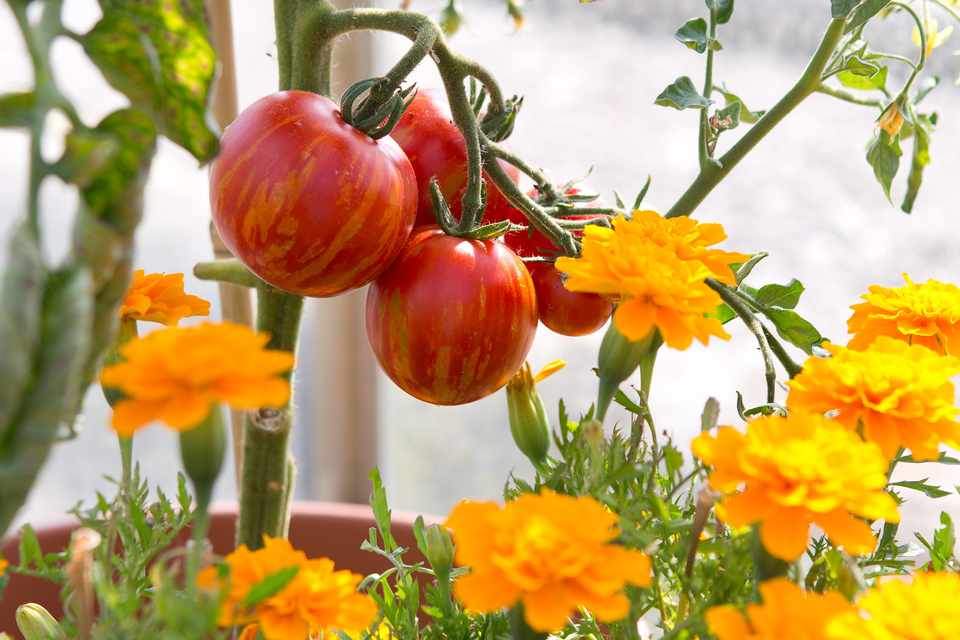
Keeping an eye out for invasive species is crucial. These plants might look pretty but can harm local ecosystems by outcompeting natives. Replace any invasive troublemakers in your garden with sustainable alternatives that coexist harmoniously with local flora and fauna.
The right plant choices make a huge difference in both the beauty of your garden and its impact on the local environment, helping to boost resilience and support a thriving ecosystem.
Holistic Pest Management
Natural ways to handle pests can keep your garden in check without using harsh chemicals. The first step is welcoming beneficial insects to your garden. Pollinators like bees and butterflies, along with natural predators such as ladybugs and lacewings, are a gardener’s best friends. These insects help pollinate plants and keep pest populations under control.
Encourage these helpers by planting flowers and herbs that attract them. Dill and wildflowers, for example, are great at doing just that. Creating a garden that’s friendly to these insects means they’ll stick around, ready to lend a hand during pest outbreaks.
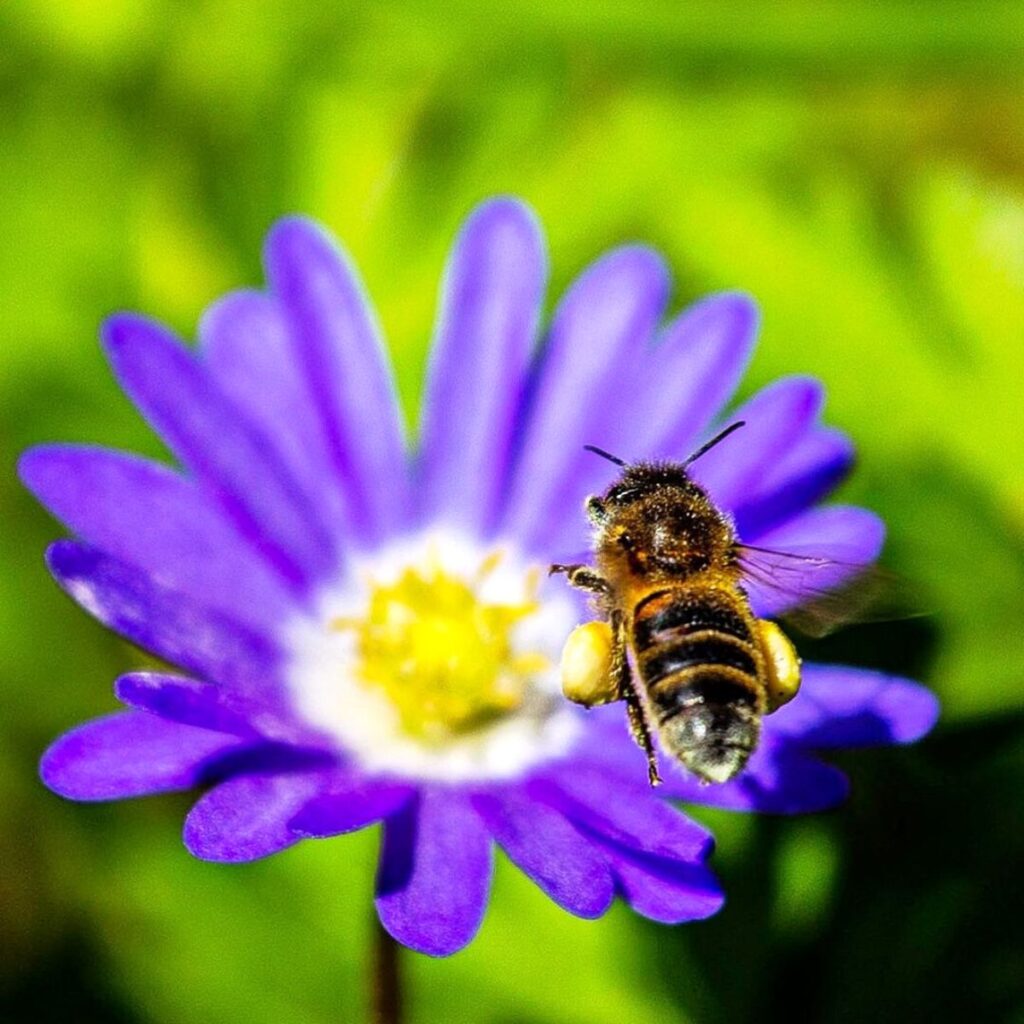
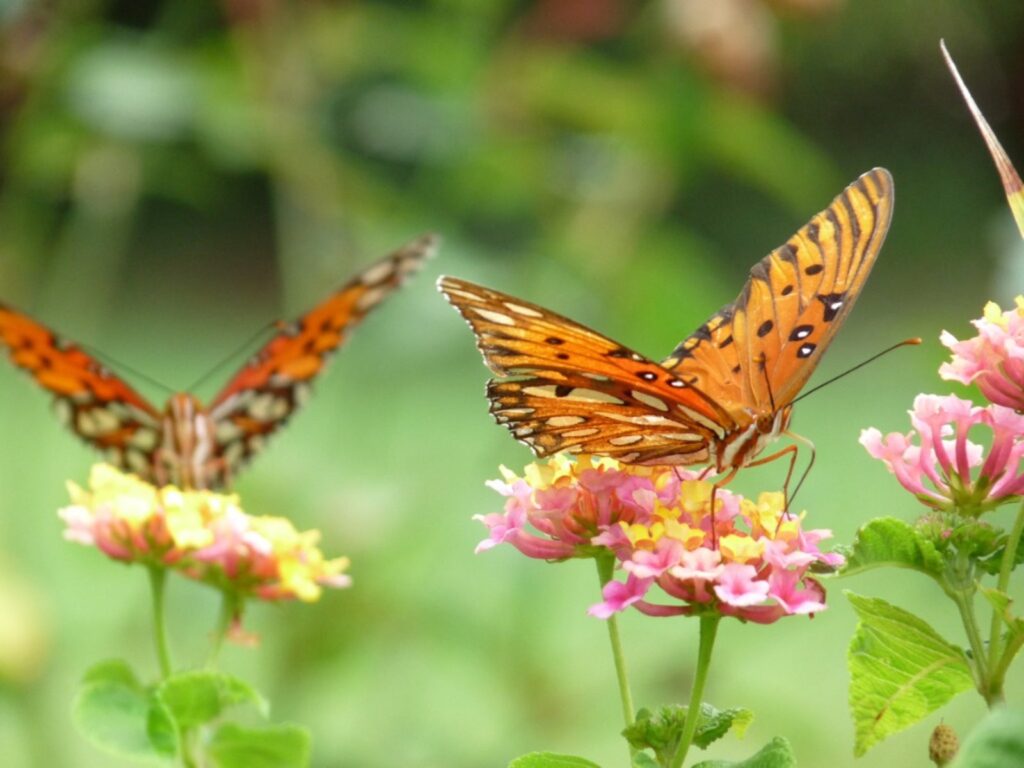
In case pests do make an unwelcome appearance, having some DIY pest control solutions up your sleeve can be a big help. Home remedies using natural ingredients like neem oil, garlic, and dish soap can deal with pests without being harsh on your plants or the environment. These solutions are easy to make, cost-effective, and usually already found in your kitchen.
Building plant immunity is another long-term pest deterrent. Crop rotation and interplanting different types of plants can confuse pests and break their life cycles. This is like a natural defense system for your garden.
Implementing these natural pest control strategies not only protects your plants but also maintains a balanced ecosystem.
Waste Reduction in the Garden
Reducing waste is an important part of making your garden eco-friendly. Composting is a great place to start. By setting up a compost bin, you can turn kitchen scraps and garden waste into nutrient-rich compost that enhances your soil – and it keeps waste out of landfills. If you’re new to this, don’t worry – basic composting is easy and just requires a good mix of greens and browns to start with.
Another cool way to cut waste is by reusing and repurposing materials. Old containers, wooden pallets, or even broken furniture can be transformed into planters or garden art. It’s about giving these items a second life while keeping costs down and creativity up.
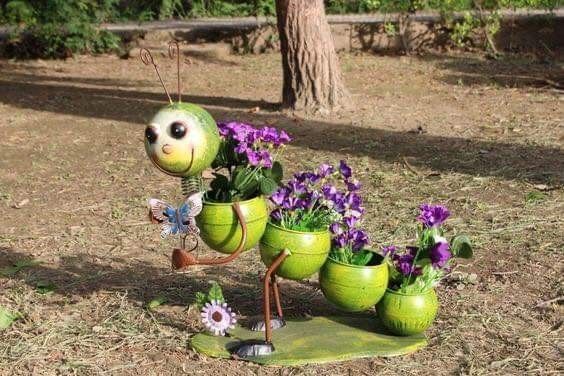
Consider minimizing the use of single-use plastics. Go for biodegradable pots and tools made from sustainable materials. These choices lessen plastic waste and help your garden develop in an eco-friendlier way.
These practices not only lessen the waste you produce but also create a more sustainable garden that’s kind to the planet. Every little bit helps when you’re on the journey to greener gardening.
Eco-friendly gardening is a journey that starts with small, mindful choices. By adopting sustainable practices, you’re not just cultivating a beautiful space; you’re also contributing to a healthier planet. Start simple, stay consistent, and watch your garden flourish alongside your commitment to the environment. Ready to get your hands dirty? The planet will thank you.
Related Articles
Brought to you by Eco TIGA – Your Friendly Guide to Eco-Friendly Living

